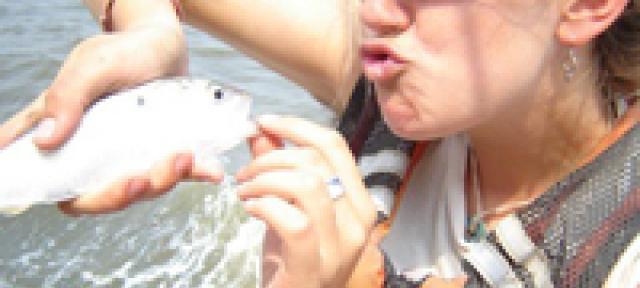An Alternative Habitat

Cora Ann Johnston's 04F eyes sparkle when she talks about juvenile blue crabs. Her Division III details her work finding an alternative nursery habitat for the tiny crabs in Chesapeake Bay.
Cora Ann Johnston's 04F eyes sparkle when she talks about juvenile blue crabs. Her Division III details her work finding an alternative nursery habitat for the tiny crabs in Chesapeake Bay.
"It's exciting work, and very relevant," she says. "Because they are scavengers, they are good for the environment." Due to urban runoff, water quality in the bay is worsening, leading to degradation of sea grass, the habitat of choice for blue crabs too small to fend for themselves in open water.
Over the past four years, Johnston has concentrated on ecology in coastal and marine environments. She spent spring semester her second year in Costa Rica working in cloud forests, then studied at Woods Hole Oceanographic Institute, in Woods Hole, Massachusetts, during the fall of her third year. "The great thing about going to Hampshire was that I could study at two different places in the field over two con-secutive semesters," Johnston says.
Last summer, she received a competitive National Science Foundation internship to do research at the Virginia Institute of Marine Sci-ence in Chesapeake Bay. She worked with Romuald Lipcius on tethering juvenile blue crabs and placing them in different habitats. Data gathered showed macro algae are a viable alternative to sea grass, a positive development because this plant provides the features blue crabs need their entire lives without interfering with the natural area.
As part of her Div III, Johnston co-wrote a paper with Lipcius about this work, which has been submitted to the Journal of Ecology. Johnston plans to take the next two years to do field research with doctoral candidates around the world.

